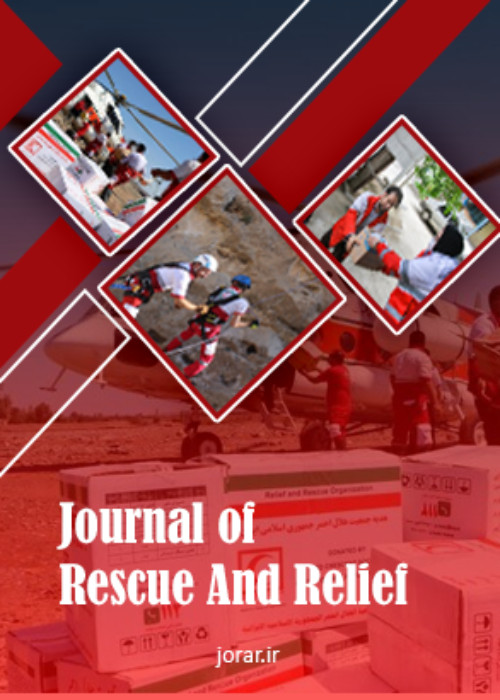Assessment of thermal hazards in South-East of Iran
Author(s):
Article Type:
Research/Original Article (دارای رتبه معتبر)
Abstract:
Introduction
The foundation of crisis management and natural disasters is based on pre-occurrence awareness. The necessary measures to reduce the risk of climatic hazards have always been considered. Every year occurred various hazards in Iran. Climatic hazards are associated with specific geographic risks in each region of the country. In the South-Eastern region of Iran, due to the geographical location and natural landscape of the region, more exposed temperatures hazards. The purpose of this study was to investigate and determine the points of the thermal hazard based on spatial analysis in the geographical information system environment.Methods
This study is a descriptive-statistical study using applied research. In this regard, the long-term database of the minimum and maximum temperatures of the meteorological stations (2000-2014) is used to measure the thermal hazards including: thermal waves (severe, moderate, weak, sum), wind chill (severe, moderate, weak, total), frost (radiant , Weight, total). In the following, the relationship between temperature and geographic conditions based on Pearson correlation model was investigated in SPSS software. Then using the GIS capabilities, areas with the same hazards were identified in different zones.Results
The results showed that the highest incidence of severe thermal waves occurred in northern Sistan and Baluchestan province with Zabol and Zahak center. The highest incidence of wind chill was observed in the central part of the northwest province with a focus on Zahedan and Khash stations. The highest density of exposure to glacial frosts in the eastern part of the province was in accordance with the Zahedan, Khash and Saravan axes. The eastern and central parts of the Sistan and Baluchistan region experience more events than frost. From the north to the south, the frequency and severity of frost is reduced.Findings: Occurrence of temperature hazards is a hallmark of arid areas. The thermal hazards, especially the heat waves and burns, are subject to the components of the location and show variable behavior with latitude and altitude variations. So far, Zahak and Zabol have the highest heat waves with lower altitude and the most frequent wind chills in Zahidan and Zahidan. Areas close to the coastal strip, such as Nik-Shahr and Chabahar, have the lowest temperature risks. It is important to identify and determine the spatial patterns of temperature hazards to make efficient decisions and implement preventive plans before the occurrence of a crisis.
Keywords:
Language:
Persian
Published:
Scientific Journal of Rescue Relief, Volume:8 Issue: 4, 2017
Page:
88
magiran.com/p1785660
دانلود و مطالعه متن این مقاله با یکی از روشهای زیر امکان پذیر است:
اشتراک شخصی
با عضویت و پرداخت آنلاین حق اشتراک یکساله به مبلغ 1,390,000ريال میتوانید 70 عنوان مطلب دانلود کنید!
اشتراک سازمانی
به کتابخانه دانشگاه یا محل کار خود پیشنهاد کنید تا اشتراک سازمانی این پایگاه را برای دسترسی نامحدود همه کاربران به متن مطالب تهیه نمایند!
توجه!
- حق عضویت دریافتی صرف حمایت از نشریات عضو و نگهداری، تکمیل و توسعه مگیران میشود.
- پرداخت حق اشتراک و دانلود مقالات اجازه بازنشر آن در سایر رسانههای چاپی و دیجیتال را به کاربر نمیدهد.
In order to view content subscription is required
Personal subscription
Subscribe magiran.com for 70 € euros via PayPal and download 70 articles during a year.
Organization subscription
Please contact us to subscribe your university or library for unlimited access!


